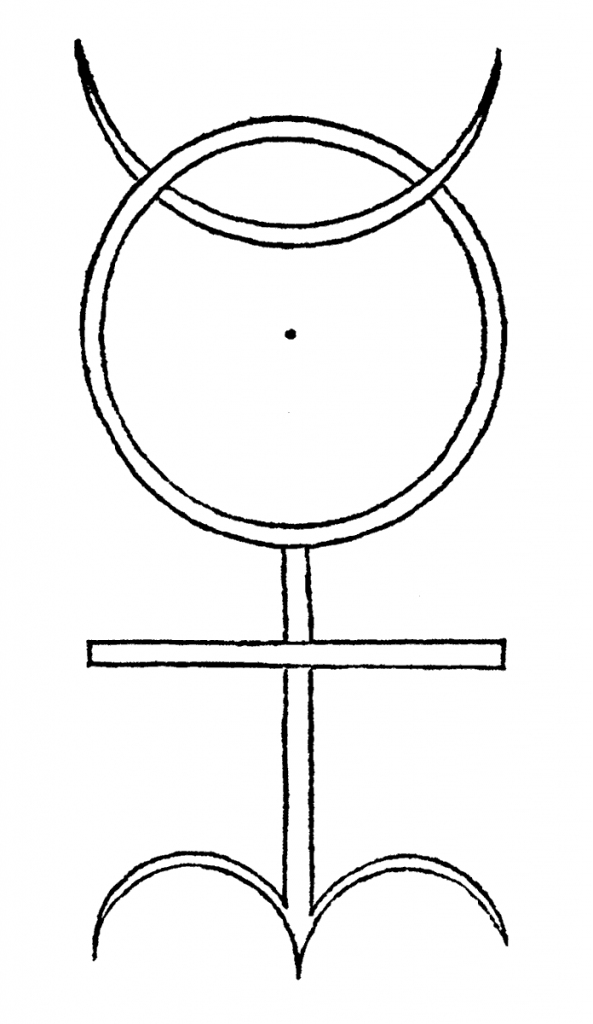John Dee, Monas Hieroglyphica: Monas Hieroglyphica
Commentary on Monas Hieroglyphica
Leave a Reply
You must be logged in to post a comment.
Themes
John Dee (1527 to 1608) was a mathematician, astronomer, astrologer, occultist, navigator, and consultant to Queen Elizabeth I. He was also an early popularizer of applied mathematics, and was instrumental in planning the British Empire.
 d
d
John Dee’s “Hieroglyphical Monad” can be understood as “the sacred symbol of one-ness.” “Hieroglyphic” means “sacred writing” and the “monad” can be understood as a unit in a mathematical sense (“unit” meaning, literally, “unity”). In his Preface to Euclid, John Dee distinguished between unit and magnitude: graphically, the point being a unit, representing a magnitude when extended into a line. Philosophically, a point is dimensionless, empty, and therefore, pure potentiality (containing everything, as it were).
The Monas Hieroglyphica is constructed from more elemental astrological signs, infused with alchemical significance. Just as the point or abstract mathematical unit represents pure potentiality, so does the Monas: it is a sort of semantic unit, by which all other meanings can be generated.
The manner in which the Monas Hieroglyphica can be decomposed, re-arranged, and used to generate new meaning, involves a Kabbalistic procedure similar to how the Pythagorean tetractys generates all other numbers, and, by extension, represents the generation of all creation. The generation of new signs and new meanings from the “Hieroglyphical Monad” is similar to Pico della Mirandola’s views on the fundamental importance of number.